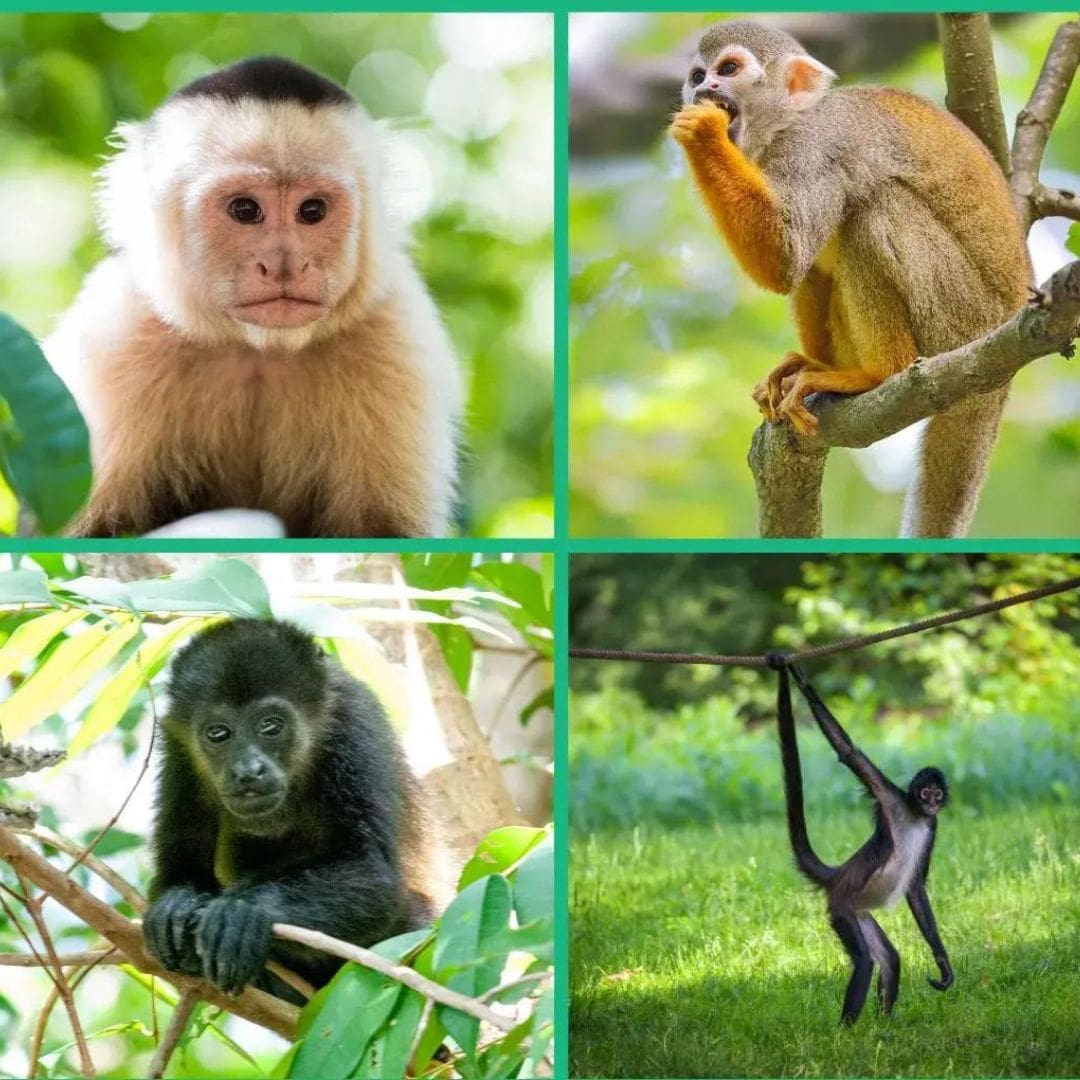Greetings, fellow primate aficionados! Are you ready to unravel the vivid landscapes of Costa Rica, diving deep into the habitats that host our remarkable relatives? Setting out on this venture promises a whirlpool of emotions, bringing you face-to-face with awe-inspiring moments that you will treasure forever.
Equip yourself with binoculars and perhaps a journal to chronicle the remarkable encounters awaiting you, as we navigate both renowned and concealed sanctuaries overflowing with vibrant primate life. This endeavor transcends merely watching the day-to-day activities of these creatures; it’s about approaching them respectfully and fostering a symbiotic relationship between humans and wildlife.
To begin, it’s essential to acquaint yourself with the different types of monkeys that grace Costa Rica with their presence. The country is home to four primary species, each offering a unique spectacle:
Central American Squirrel Monkey (Saimiri oerstedii)
– Location: Predominantly found in the Pacific lowlands of Costa Rica, with significant populations in Corcovado National Park and Manuel Antonio National Park.
– Description: The smallest of the Costa Rican monkeys, the squirrel monkey is characterized by its vibrant coat, a fusion of orange, white, and grey shades with a black cap on its head. Despite their small stature, they are extremely agile and vivacious, displaying a fascinating array of vocalizations and facial expressions, and engaging in playful and social behavior that is a delight to observe.
White-faced Capuchin (Cebus imitator)
– Location: They enjoy a wide range of habitats, from dry forests to humid rainforests, being frequently seen in Santa Rosa National Park and Palo Verde National Park, among others.
– Description: A medium-sized monkey, the white-faced capuchin showcases a sharp contrast between its black body and white face and shoulders, which grants it its name. They are known for their high intelligence, exhibiting problem-solving skills, and using tools to access food. Observing these monkeys provides insights into their complex social structures and vibrant personalities.
Mantled Howler Monkey (Alouatta palliata)
– Location: They gravitate towards the forests in the northwestern parts of Costa Rica, including areas around Guanacaste and the Nicoya Peninsula.
– Description: Recognizable by their deep and powerful howls that reverberate through the forest, the mantled howler monkey is an impressive sight with its robust body covered in a dark brown to black coat of fur. They spend most of their time high up in the trees, leisurely moving and foraging for leaves and fruits. Their prehensile tail is a remarkable feature, functioning almost like a fifth limb, providing stability and grip as they navigate the treetops.
Geoffroy’s Spider Monkey (Ateles geoffroyi)
– Location: Mainly inhabiting the protected regions such as Corcovado National Park and the Caribbean lowlands of Costa Rica.
– Description: Distinguished by their slender bodies and long, graceful limbs, the spider monkeys exhibit a rare kind of elegance as they traverse the forest canopies with remarkable agility. Their prehensile tail is a marvel, acting as a handy tool for various tasks. They are known for their social and playful nature, often seen swinging energetically through the trees, making them a captivating sight for any wildlife enthusiast.
With this knowledge in tow, let’s pinpoint the must-visit places that these primates favor, offering a front-row seat to witness the distinct behaviors, antics, and societal structures of various primate species firsthand.
Beyond the excitement of spotting these creatures is the crucial role of practicing ethical wildlife watching, which encompasses enjoying this grand spectacle while safeguarding the monkeys’ natural habitats. We guide you to maintain a respectful distance, allowing for a delightful observation of their playful deeds without interrupting their daily lives.
This respectful venture opens up opportunities for magical encounters, letting you lock eyes with a curious youngster or witness tender grooming and bonding moments, a silent testament to the intricate web of relationships in the wild.
So, are you prepared to explore the vibrant landscapes of Costa Rica, immersing yourself in the rich narratives crafted by these remarkable beings? Hold on tight, for you’re about to step into a fascinating world, a land where every day is a fresh chapter in the grand tale of life. Let’s embark on this enlightening journey, not merely as spectators but as conscientious observers, cherishing the vibrant lives unfolding in Costa Rica‘s magical corners. Gear up, fellow primate enthusiasts; a thrilling exploration awaits!






